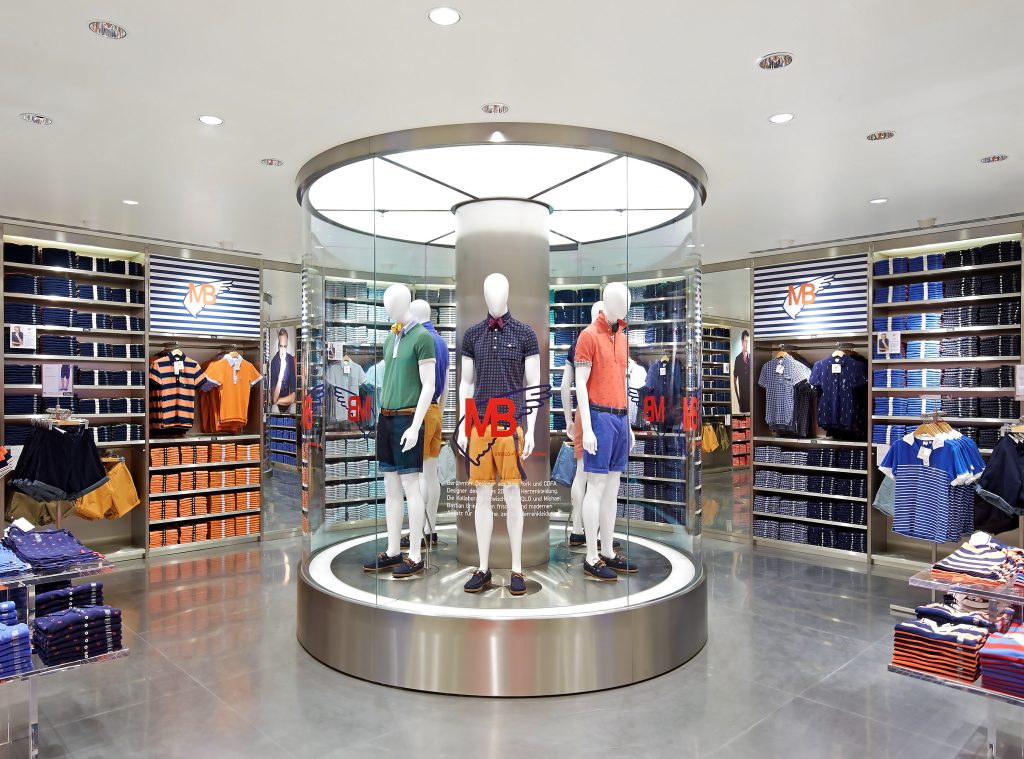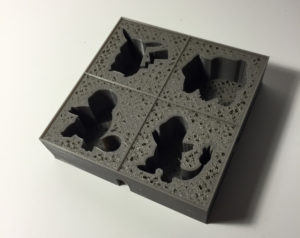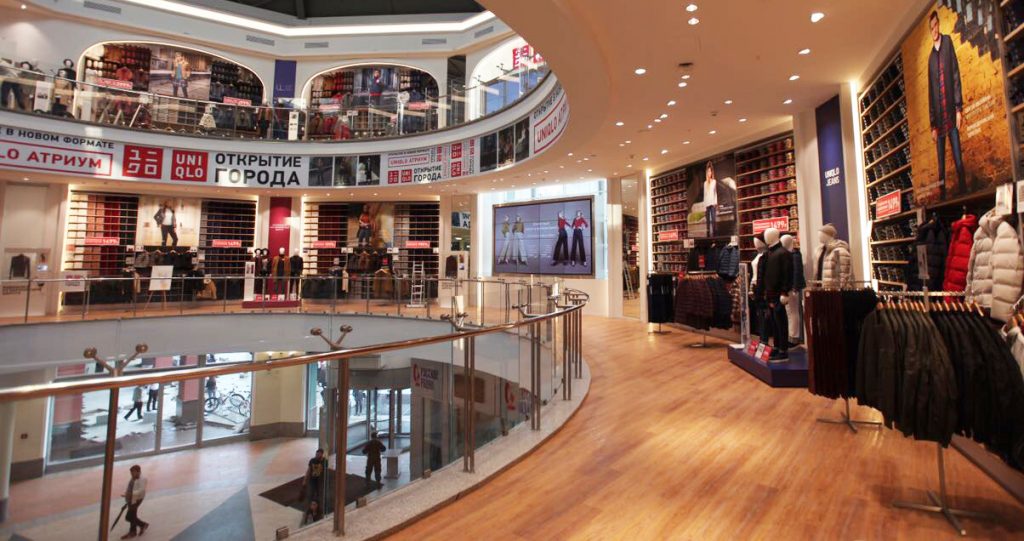Bricks and mortar retail has been going through an extended crisis for many years now. The rise of online retail, shifts in consumer behavior and the fragmenting of collective media have wreaked havoc on their businesses. Many iconic chains, brands, and department stores have gone under. The middle seems to be eroding with either maximum distribution formulas such as Primark offering the absolute lowest prices or rare ultra expensive goods being the most desirable. People still shop, as a fun activity. There are some chains in fast fashion such as Inditex (parent company of Zara, Pull & Bear, Bershka), Fast Retailing (Uniqlo), bestseller (Vero Moda, Only) & H&M that do well.

Interior of a Uniqlo store
These stores have their own design, procurement, distribution, and retail operations. They sell their own brands under their own roofs. It seems that you either have to be cheap, hyper-expensive or fast. The fast option seems to be a happy medium between having margins and profits coupled with global reach. There is also some kind of secret sauce to these businesess and how they choose, build and manage brands and lines. At the moment the kings of fast fashion trade blows amongst each other but seem unassailable. It used to be that stores would design collections two years in advance. They would estimate demand for individual articles and order them from suppliers in Asia. Some of the fast retailers do this still but they are all much faster than department stores and other brands are at responding to trends.
The fastest firm is probably Inditex. This very vertically integrated company, which near shores most of its current items and sends basics to Asia, can go from design to in store item in two weeks. If it takes me two years to plan ahead and you can plan two weeks ahead based on in store data and the very latest in trends then eventually you will win. Better, more up-to-date data coupled with faster, more market-responsive research will win out every time on a firm trying to predict the future 24 months out.

Uniqlo display in Germany.
So what if we take 3D printing into account and see if we can do this in retail also? What if we can print close to the customer, quickly in response to the latest data and trends? What if we didn’t tie up all our money and operations in stock? What if instead we printed on demand in a retail location? You may think that this has been tried but apart from some small 3D print shops this has actually not been tried in any kind of capital intensive way.

3D Printed Molds
You may think that 3D printed goods are not good enough in terms of color and surface finish.
- But for many products where 3D printing is a mold the finished product can pass muster as an end use product. Think of cookies, chocolate, slippers, insoles, sports gear handles, glasses and many more items where customization is possible, at a good surface finish, at low cost through direct or intermediate.
- Surface finishing solutions such as DyeMansion are also making consumer-friendly 3D printed goods more affordable.

You may think that 3D printing is too expensive.
- That may be the case for larger items but anything the size of a softball or smaller can be cost effective if you go through the trouble of sourcing your own material.
- This can reduce the cost from $800 per liter to $40 for SLA or $95 to $30 for SLS or $30 to $5 for FDM.
You may think that 3D printing is not fast or reliable enough.
- With an array of cost-effective 3D printers, you can now manufacture at scale, at low item cost at around a 90% success rate which sucks but works if you give yourself the time to start multiple builds.
- Yes an iPhone case could take five hours or an entire day depending on the technology but if the post-processing solution, material sourcing and manufacturing is low cost enough you can still do in day or next day customization.
- This means people have to come back to the store which actually may be advantageous.
You may think that 3D printing is too limited in color, materials, textures etc. You’d be absolutely correct.
- But we don’t have to 3D print the entire backpack we can customize the name tag, clasp or part of the item.
- I call this combinatory manufacturing, using a 3D printed higher performing higher cost small thing to improve a mass manufactured one of a million thing.

Uniqlo in Russia
You might say that customers may not like customization, or they may not like the effort or they may not pay more for it. And you would in many cases be absolutely right.
- But, for some items customization would be key. I mean for me, I wouldn’t need to customize all the things one Invisalign or hearing aids like product would be fine.
- And its not just about customizing to the individual user. You can customize for local (high school) football teams, events and tastes to 3D print the latest fashion.
To me the future is clear, through fast things some will be able to rapidly outcompete other companies. By using 3D printing in retail a new impulse and a new category of products will be unlocked. The future is fast things. I’ll write a series of articles on this subject including: the desire engine, make it in the store & 3D printing velocity.
Subscribe to Our Email Newsletter
Stay up-to-date on all the latest news from the 3D printing industry and receive information and offers from third party vendors.
You May Also Like
NSF Awards Kentucky $1M for Advanced Manufacturing
The National Science Foundation has awarded a $1 million grant to the University of Louisville for the Advancing Manufacturing and Building Construction Technologies (NSF AMT) project. This initiative is part...
3D Printing News Briefs, May 11, 2024: 3D Printed Stent, Tower, Sculptures, & More
We’re starting off with medical research in today’s 3D Printing News Briefs, as researchers in Korea used CT images and 3D printing to fabricate an educational simulator for a mastoidectomy....
3D Printing Unpeeled: Wind Turbines, Probiotics and Lenses
TPI Composites, ORNL and Ingersoll Rand are working to make wind turbine tooling segments that can be 18.3 meters long. These elements also include resistive wires that help keep the...
Tethon 3D Releases Cost-effective Bioprinter
Tethon 3D, known for its ceramic-loaded DLP materials, custom resins, and DLP 3D printers, has recently released a bioprinter. Vat polymerization printers like DLP systems have been widely used by...
































